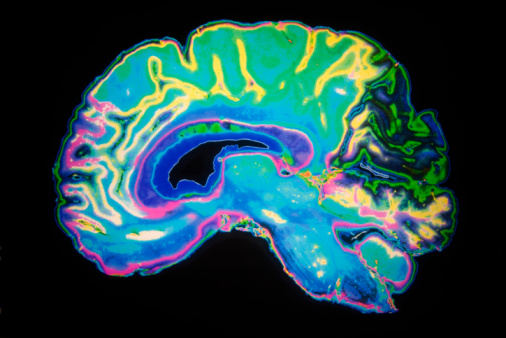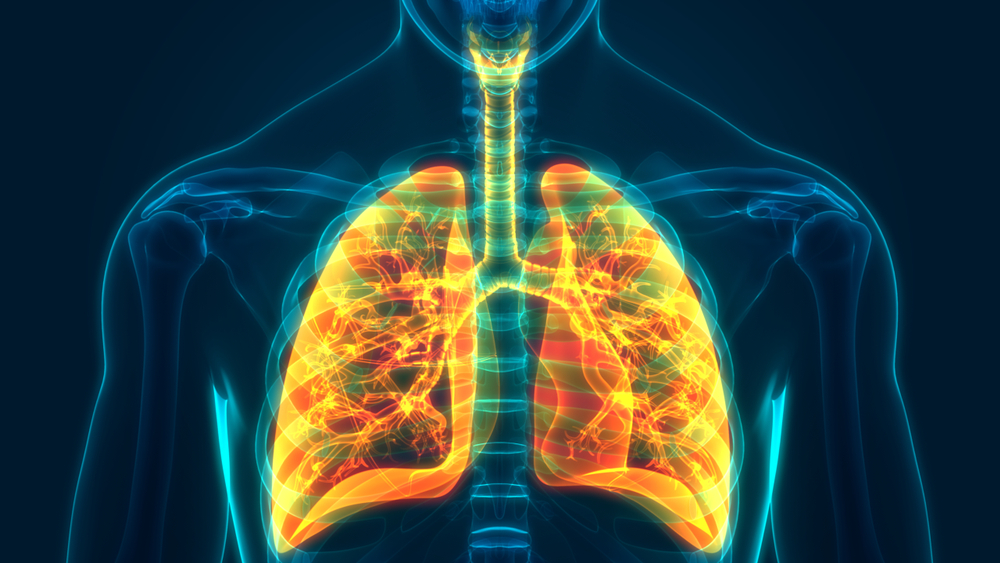
Eugeroics—Viagra® for the brain?
December 7th, 2017By Ward Dean, M.D.
Adrafinil (Olmifon®/ Adra-Pro™), modafinil (Provigil®/ Moda-Pro™), and armodafinil (Nuvigil®) are three members of a class of drugs known as eugeroic’s (“eugregorique” means “good arousal” in French).1 The term was proposed in 1987 by Jouvet, to characterize the arousal, vigilance-enhancing, anti-depressant effects of adrafinil, the first drug in this class. Adrafinil was developed in France in the late 1970s by Louis Lafon Laboratories. One of the most striking behavioral responses first noted with adrafinil was increased activity in mice,2 monkeys3 and rats.4 Human studies followed, indicating that adrafinil had clinical efficacy as a vigilance-promoting, mood-enhancing agent in the elderly. But since most of the studies were published in French, where it was indicated for increasing alertness/vigilance-enhancement (similar-to, but without the excessive stimulating effects or abuse potential of amphetamines), adrafinil was largely unknown outside of France. Nevertheless, adrafinil soon gained a popular off-label reputation as a cognitive enhancing, nootropic agent.
In the late 1980s, modafinil –the primary metabolite of adrafinil–was developed (and was marketed in France in the early 1990s), was finally approved by the FDA in 1998 for the treatment of narcolepsy, shift work sleep disorder (excessive daytime sleepiness due to changes in working hours or job requirements) and obstructive sleep apnea. In 2007, armodafinil -the third eugeroic –was approved by the FDA for the same indications.
Because these drugs are so structurally similar, and because the wakefulness-producing effects of adrafinil were later attributed to its metabolite, modafinil, the rest of this article will focus on modafinil. The main differences with the three drugs are their relative strengths, pharmacokinetics and availability.
Structure of Adrafinil, Modafinil and Armodafinil
Figure 1: After oral ingestion, adrafinil is metabolized into modafinil, and its longer-acting R-enantiomer (mirror-image analog) armodafinil. Although this sequence was known as early as 1986,5 it took another 10-20 years for the clinical efficacy of each of the two metabolites to be appreciated.
Mechanisms of Action
The exact mechanism(s) that explain modafinil’s wake-promoting, cognitive-enhancing properties have not been definitively identified. Modafinil increases histamine (HA), norepinephrine (NA), serotonin (5-HT) dopamine (DA) and orexin systems, and inhibits GABA and glutamate systems in the brain.6 Scientists from the National Institutes of Health (NIH) determined that modafinil’s varied effects on different conditions were due to multiple effects on different brain areas and neurotransmitter systems (see Fig. 2).7
Figure 2: Targets of MOD’s actions as a cognitive enhancer. Brain areas and related neurotransmitter systems that are potentially involved in the therapeutic actions of MOD as a cognitive enhancer. NE= norepinephrine; DA= Dopamine; GABA= gamma-amino-butyric-acid; GLU= glutamate; NET= norepinephrine transporter; DAT= dopamine transporter, 5-HT=serotonin; Ach= Acetylcholine. Solid lines indicate direct interactions, while dashed lines indicate observed effects that appear to be via indirect interactions or for which a mechanism has not yet been elucidated.
Approved Indications
So far, the only approved indications for modafinil and armodafinil in the US are for sleep-related disorders such as narcolepsy, obstructive sleep apnea and shift work sleep disorder, although it is often used for a growing number of off-label uses.8
Unapproved/Off-Label Uses
Among the off-label uses for which modafinil and the other eugeroics have been tested are fatigue, cocaine addiction, depression, seasonal affective disorder, bipolar disorder, multiple sclerosis, and schizophrenia. In fact, the range of off-label uses for modafinil was reported by several researchers to be outpacing the growth of the empirical literature.9
ADHD
To date, the strongest evidence for off-label use for modafinil is for attention deficit/hyperactivity disorder (ADHD) in children and adults.10 The first study to evaluate modafinil for ADHD in the U.S. revealed that for 22 adults, twice-daily 200 mg of modafinil was equivalent to 20 mg twice-daily of dextroamphetamine. The authors concluded that modafinil may be a viable alternative to conventional stimulants for adults with ADHD.
In 2003, physicians at the Children’s Specialized Hospital, Toms River, NJ conducted a double-blind study of modafinil versus placebo on 22 children with ADHD. Ten of 11 treatment patients were “significantly improved,” whereas 8 of 11 control subjects manifested “no” or “slight” improvement.11
The following year, in the UK, scientists at the University of Cambridge School of Medicine, conducted a double-blind study of 20 patients with ADHD, treated with a single dose of modafinil 200 mg or placebo. Modafinil produced a pattern of cognitive enhancement similar to that observed in healthy adults, with improvements in tests of short-term memory, visual memory, spatial planning, and stop-signal motor inhibition.12
In 2005, at the University of California, Irvine, 246 children and adolescents 6-17 years old with ADHD were treated with modafinil (n=164) or placebo (n=82) for 9 weeks. A unique aspect of this study was the use of an 85 mg modafinil tablet, and the dosage was individually titrated. The minimum and maxim dosages used in the study were 170-425 mg, respectively. Modafinil once daily improved the full spectrum of symptoms of ADHD, including inattention, impulsivity and hyperactivity and were evident both at school and at home. Improvement occurred by the first week of the study, and continued throughout the 9-week study.13
Cognitive Enhancement in Normal Individuals
This is the subject of greatest interest to the majority of healthy off-label modafinil users/potential users—will it improve my mental performance? The answer from most of the studies appears to be “yes.”
In 2003, scientists from Cambridge University School of Medicine, who–as described above demonstrated modafinil’s benefit in ADHD—were interested in assessing whether modafinil might act as a cognition-enhancer in normal subjects, without the side effects experienced by those who used amphetamines for alerting purposes. Sixty healthy young adult male volunteers received either a single oral dose of placebo, or 100 or 200 mg modafinil prior to performing a comprehensive battery of neuropsychological tests of memory and attention. Modafinil significantly enhanced performance on the majority of the tests and the subjects reported feeling more alert, attentive and energetic on the drug, compared to those on placebo, indicating that modafinil selectively improves neuropsychological task performance.14
A meta-analysis of studies of modafinil for neuroenhancement in healthy individuals by scientists in Germany revealed that modafinil’s use as a cognitive enhancer for “non-medical uses” was widespread. Although they admitted that modafinil improved attention for well-rested individuals and maintained wakefulness, memory and executive functions to a significantly higher degree in sleep-deprived individuals, they cautioned that expectations by many users exceeded the drug’s actual effects.15
The Cambridge doctors relentlessly performed another double-blind placebo controlled study of sixty-four healthy male (n=31) and female (n=33) volunteers, age range 19-36 years. Modafinil 200 mg or placebo was given to the participants. Two-hours post-drug administration, the subjects completed a battery of computerized neuropsychological tasks, which evaluated executive function, working memory, objective creativity and motivation to complete the tasks. Although modafinil demonstrated improvements in certain tests of “cold cognition,” the most striking improvements were noted for the most difficult of these computerized tasks. Another important finding was a striking increase in task motivation. Participants on modafinil felt considerably more pleasurable after performing individual tasks. The main finding of the study in healthy volunteers is a clear performance improvement in the most difficult stages of computerized tests of working memory, visual memory and problem solving.16
A team from the University of Oxford recently performed a meta-analysis of studies conducted between January 1990 through December 2014 that evaluated the cognitive-enhancing effects of modafinil in healthy adults. They found that modafinil intake clearly enhances executive function and that when the most complex assessments are used, modafinil consistently enhances attention, and improves executive functions and learning.17
Military Uses of Modafinil
Perhaps even more significant than evaluations of modafinil’s effects on healthy unstressed normal subjects, would be tests of modafinil’s effects on above-average healthy normals, subject to sleep-deprivation and required to perform complex, stressful maneuvers. Those in the military, (especially pilots) are routinely required to perform under such conditions. Consequently, military services around the world were quick to appreciate the potential benefit of a wakefulness-promoting drug like modafinil.
A year after modafinil was approved in France, but 7 years prior to its approval in the U.S., the U.S. Air Force was keenly interested in its vigilance-improving effects, especially in sleep-deprived aviators, with its minimal peripheral side effect profile, low to absent abuse potential and lack of interference with normal sleep.18
In 2000, researchers at the U.S. Army Aeromedical Laboratory at Fort Rucker, Alabama, exposed six pilots to two 40-hour periods of continuous wakefulness during which they were required to complete several simulator flights. In one period, they were administered three 200 mg doses of modafinil and in the other, matching placebo. Modafinil attenuated sleep deprivation effects on four of six flight maneuvers, reduced slow-wave EEG activity and lessened self-reported problems with mood and alertness- in comparison to placebo. The most noticeable benefits occurred between 0330 and 1130 hours, when the combined impact of sleep loss and the circadian trough was most severe. The authors concluded that; “modafinil is a promising countermeasure for sleep loss in normals.”19
In Canada, scientists at the Defense Research and Development Center in Toronto, conducted a double-blind placebo controlled study of modafinil 300 mg or placebo, in a group of 18 healthy, non-sleep-deprived adults. The scientists wanted to evaluate the effectiveness of modafinil for use during sustained military operations to ameliorate the effects of fatigue due to sleep loss. Three 50-minute computerized cognitive assessment test batteries were given, (before drug ingestion and at 90 and 180 min after drug ingestion). Relative to placebo, modafinil improved fatigue levels, motivation, reaction time and vigilance.20
Two years later, a review of the performance- and alertness-sustaining/restoring effects of modafinil during sleep deprivation in normal, healthy adults was conducted at the Walter Reed Army Institute of Research. Researchers concluded that modafinil is efficacious for sustaining/restoring objective performance and alertness during sleep deprivation with few adverse effects, and that modafinil restores performance and alertness to non-sleep-deprived levels.21
Two back-to-back studies were published an issue apart in the journal, Aviat Space Environ Med, from researchers at the U.S. Army Aeromedical Research Laboratory. The first study involved 18 helicopter pilots, with two 40-hour periods of sustained wakefulness, during which time each pilot completed 18 helicopter flights and other evaluations. During each 40-hour iteration, the pilots ingested 3 doses at 4-hour intervals of modafinil (100 mg), dextroamphetamine (5 mg) or placebo. Modafinil and dextroamphetamine maintained alertness, feelings of well-being, cognitive function, judgement, risk perception, and situational awareness of sleep-deprived aviators consistently better than placebo.22 The other study was a meta-analysis of studies of modafinil which met inclusion criteria relevant to military research, to summarize the current state of knowledge of potential cognitive-enhancing drugs, with the conclusion that the results supported the efficacy of modafinil.23
In a review of the appropriateness of modafinil for military use, a scientist at the Korean Air Force Academy summarized modafinil’s effects. He stated that modafinil not only has waking, mood-brightening and memory-enhancing effects, but also has been used for disease-related fatigue, attention-deficit-disorder, Alzheimer’s disease, age-related memory decline, depression, idiopathic hypersomnia, cognitive impairment in schizophrenia, myotonic dystrophy, post-anesthesia grogginess, everyday cat-napping, and jet lag treatments. He summed up by stating that; “modafinil can be used by anyone who wishes to work late, stay awake, enhance their cognitive reactions, or brighten their moods.”24
Safety
These drugs are generally considered very safe, with minimal abuse potential. As one indication of the safety of modafinil, Bastuji and Jouvet described a subject who unsuccessfully attempted to commit suicide by taking forty-five 200 mg modafinil tablets (a dosage 15 times that of a very high dose).25 Allergic reactions are rare, but can be severe. If one develops a rash with any of these medications, further use should be immediately discontinued, and medical care sought. If renal or hepatic impairment is present, the dosage should be reduced.
Dosage and Pharmacokinetics
Plasma levels of adrafinil peak about one hour after consumption, and peak EEG and behavioral effects appear about an hour later.26 Modafinil and armodafinil reach peak plasma levels 2 hours after consumption when taken on an empty stomach, and may take up to 4 hours when taken with a meal.27, 28
Recommended bio-equivalent dosages of adrafinil are 300-600 mg in the morning, and possibly another 300 mg at noon; modafinil is 100-200 mg in the morning (max dose 400 mg/day); and armodafinil 150-250 mg in the morning.
Availability
Modafinil and armodafinil are now generic and a prescription is required when obtaining them from a pharmacy in the U.S. Adrafinil, having never been approved in the U.S., (and not being a scheduled drug in France), may be freely imported into the U.S. using the FDA’s personal-use drug import policy. Adrafinil has the additional advantage of being less expensive than the other two, newer eugeroics.
References.
1. Jouvet M. Une nouvelle famille de médicaments pour améliorer l.éveil: les eugrégoriques. Journ ées d.étude sur le vieillissement, organisées par l. ORPHEM, Marseilles, France; March 25.26, 1987.
2. Duteil J, Rambert FA, Pessonnier J, Gombert R, Assous E. A possible alpha-adrenergic mechanism of drug (CRL 40028)-induced hyperactivity. Eur J Pharmacol 1979;59:121.123.
3. Milhaud CL, Klein M J. Effects de l.Adrafinil sur l.activité nocturne du macaque rhésus (Macaca mulatta). J Pharmacologie 1985;16:372.80.
4. Delini-Stula A, Hunn C. Effects of single and repeated treatment with antidepressants on the apomorphine-induced yawning in the rat: The implication of -1 adrenergic mechanisms in the D-2 receptor function. Psychopharmacology 1990;101:62.66.
5. Rambert, FA, Pessonnier J, de Sereville J-E, Pointeau, A-M., Duteil J. Profil psychopharmacologique originil de l.adrafinil chez la souris. J Pharmacologie 1986;17:37.52.
6. Gerrard P and Malcolm R. Mechanisms of modafinil: A review of current research. Neuropsychiatr Dis Treat. 2007 Jun; 3(3): 349–364.
7. Mereu M, Bonci A, Newman AH, and Gianluigi Tanda G. The neurobiology of modafinil as an enhancer of cognitive performance and a potential treatment for substance use disorders. Psychopharmacology (Berl). 2013 October; 229(3): 415–434. doi:10.1007/s00213-013-3232-4.
8. Ballon JS, Feifel D.A systematic review of modafinil: Potential clinical uses and mechanisms of action. J Clin Psychiatry. 2006 Apr;67(4):554-66.9.
9. MJ, and Carter CS. Modafinil: A Review of Neurochemical Actions and Effects on Cognition. Neuropsychopharmacology (2008) 33, 1477–1502; doi:10.1038/sj.npp.1301534
10. Taylor FB, Russo J. Efficacy of modafinil compared to dextroamphetamine for the treatment of attention deficit hyperactivity disorder in adults. J Child Adolesc Psychopharmacol. 2000 Winter;10(4):311-20.
11. Rugino, TA and Samsock, TC. Modafinil in children with attention-deficit hyperactivity disorder. Pediatric Neurology 2003 Volume: 29 Issue: 2 Pages: 136-142 DOI: 10.1016/S0887-8994(03)00148-6
12. Turner DC, Clark L, Dowson J, Robbins TW, Sahakian BJ. Modafinil improves cognition and response inhibition in adult attention-deficit/hyperactivity disorder. Biol Psychiatry. 2004 May 15;55(10):1031-40.
13. Biederman J, Swanson JM, Wigal SB, Et al. Efficacy and Safety of Modafinil Film–Coated Tablets in Children and Adolescents with Attention-Deficit/Hyperactivity Disorder: Results of a Randomized, Double-Blind, Placebo-Controlled, Flexible-Dose Study. Pediatrics Vol. 116 No. 6 December 1, 2005 pp. e777 -e784 (doi: 10.1542/peds.2005-0617)
14. Turner DC, Robbins TW, Clark L, Aron AR, Dowson J, Sahakian BJ. Cognitive enhancing effects of modafinil in healthy volunteers. Psychopharmacology (Berl). 2003 Jan;165(3):260-9.
15. Repantis D, Schlattmann P, Laisney O, Heuser I. Modafinil and methylphenidate for neuroenhancement in healthy individuals: A systematic review. Pharmacol Res. 2010 Sep;62(3):187-206. doi: 10.1016/j.phrs.2010.04.002.
16. Müller U, Rowe JB, Rittman T, Lewis C, Robbins TW, and Sahakian BJ. Effects of modafinil on non-verbal cognition, task enjoyment and creative thinking in healthy volunteers. Neuropharmacology. 2013 Jan; 64(5): 490–495. doi: 10.1016/j.neuropharm.2012.07.009
17. Battleday RM, Brem AK. Modafinil for cognitive neuroenhancement in healthy non-sleep-deprived subjects: A systematic review. Eur Neuropsychopharmacol. 2015 Nov;25(11):1865-81. doi: 10.1016/j.euroneuro.2015.07.028.
18. Lyons TJ, French J. Modafinil: the unique properties of a new stimulant. Aviat Space Environ Med. 1991 May;62(5):432-5.
19. Caldwell JA Jr, Caldwell JL, Smythe NK 3rd, Hall KK. A double-blind, placebo-controlled investigation of the efficacy of modafinil for sustaining the alertness and performance of aviators: a helicopter simulator study. Psychopharmacology (Berl). 2000 Jun;150(3):272-82.
20. Baranski JV, Pigeau R, Dinich P, Jacobs I. Effects of modafinil on cognitive and meta-cognitive performance. Hum Psychopharmacol. 2004 Jul;19(5):323-32.
21. Wesensten NJ. Effects of modafinil on cognitive performance and alertness during sleep deprivation. Curr Pharm Des. 2006;12(20):2457-71.
22. Estrada A, Kelley AM, Webb CM, Athy JR, Crowley JS. Modafinil as a replacement for dextroamphetamine for sustaining alertness in military helicopter pilots. Aviat Space Environ Med. 2012 Jun;83(6):556-64.
23. Kelley AM, Webb CM, Athy JR, Ley S, Gaydos S. Cognition enhancement by modafinil: a meta-analysis. Aviat Space Environ Med. 2012 Jul;83(7):685-90.
24. Kim DS. Practical Use and Risk of Modafinil, a Novel Waking Drug. Environ Health Toxicol. 2012; 27: e2012007. doi: 10.5620/eht.2012.27.e2012007
25. Bastuji H, Jouvet M. Successful treatment of idiopathic hypersomnia and narcolepsy with modafinil. Prog Neuropsychopharmacol Biol Psychiatry 1988;12:695.700.
26. Salteu B, Grunberger J, Linzmayer L, Stohr H. Pharmaco-EEG, psychometric and plasma level studies with two novel alpha-adrenergic stimulants CRL 40476 and 40028 (Adrafinil) in elderly. New Trends Exp Clin Psychiatry 1986;11:5.31.
27. Provigil (modafinil) Package insert, Aug 17, 2007.
28. Nuvigil (armodafinil) Package insert, Feb 2017.








